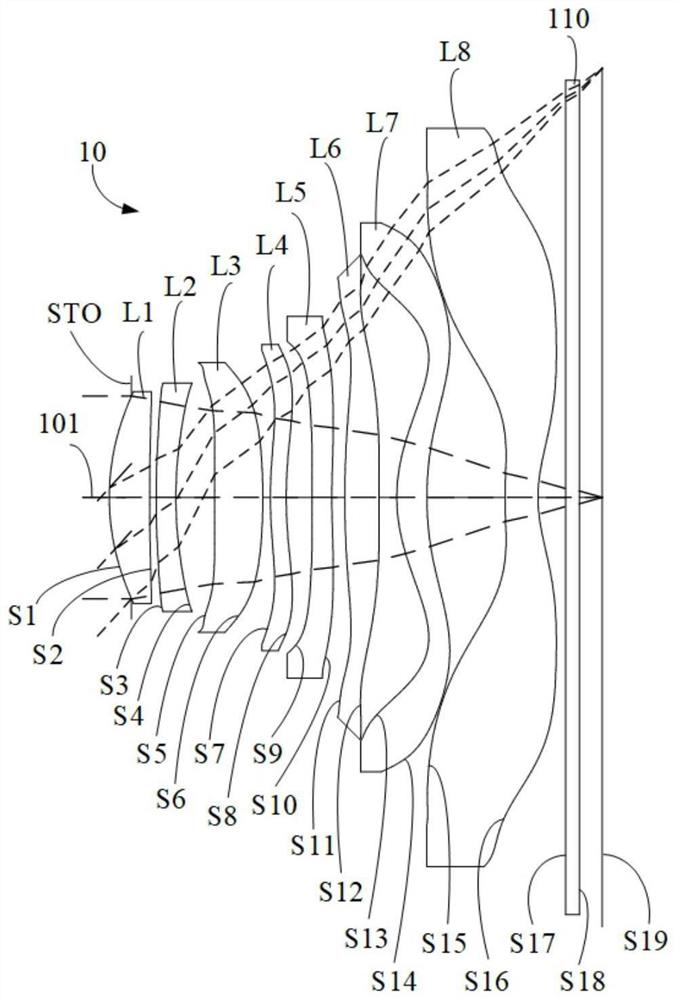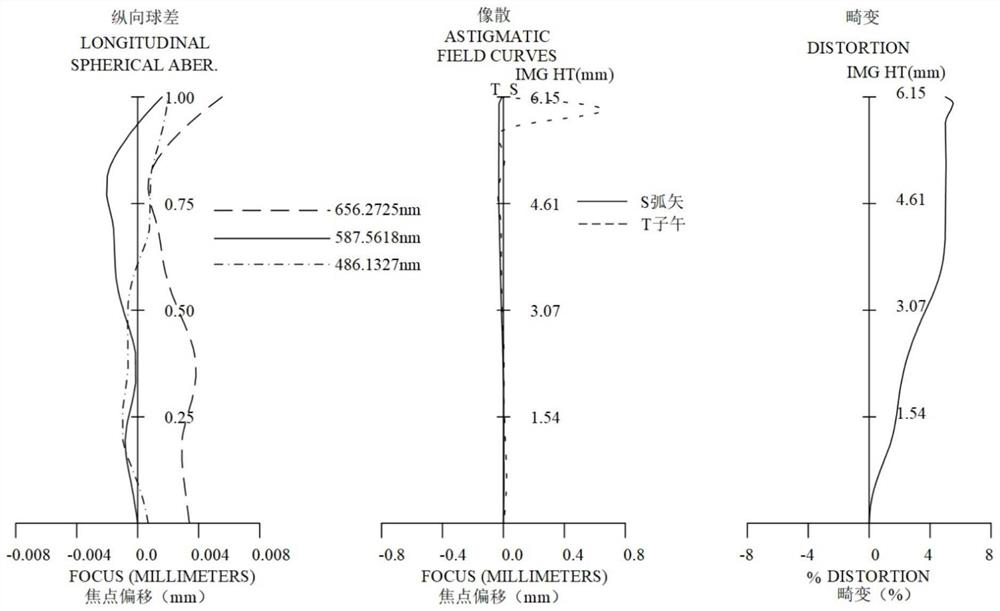Optical system, camera module and electronic equipment
An optical system and optical axis technology, applied in optics, optical components, instruments, etc., can solve problems such as image quality degradation, low resolution, and poor lens image quality, and achieve good camera quality, small footprint, and reduced obstacles Effect
- Summary
- Abstract
- Description
- Claims
- Application Information
AI Technical Summary
Problems solved by technology
Method used
Image
Examples
no. 1 example
[0122] refer to figure 1 , in the first embodiment, the optical system 10 includes an aperture stop STO, a first lens L1 with positive refractive power, a second lens L2 with negative refractive power, and a second lens L2 with positive refractive power along the optical axis 101 from the object side to the image side. The third lens L3 with refractive power, the fourth lens L4 with negative refractive power, the fifth lens L5 with negative refractive power, the sixth lens L6 with positive refractive power, the seventh lens L7 with positive refractive power, and the seventh lens L7 with negative refractive power. Refractive power of the eighth lens L8. Each lens surface type of optical system 10 is as follows:
[0123] The object side S1 of the first lens L1 is a convex surface at the near optical axis 101, and the image side S2 is concave at the near optical axis 101;
[0124] The object side S3 of the second lens L2 is a convex surface at the near optical axis 101, and the...
no. 2 example
[0152] refer to image 3 , in the second embodiment, the optical system 10 includes an aperture stop STO, a first lens L1 with positive refractive power, a second lens L2 with negative refractive power, and a second lens L2 with positive refractive power along the optical axis 101 from the object side to the image side. The third lens L3 with refractive power, the fourth lens L4 with positive refractive power, the fifth lens L5 with negative refractive power, the sixth lens L6 with positive refractive power, the seventh lens L7 with positive refractive power, and the seventh lens L7 with negative refractive power. Refractive power of the eighth lens L8. Each lens surface type of optical system 10 is as follows:
[0153] The object side S1 of the first lens L1 is a convex surface at the near optical axis 101, and the image side S2 is concave at the near optical axis 101;
[0154] The object side S3 of the second lens L2 is a convex surface at the near optical axis 101, and th...
no. 3 example
[0169] refer to Figure 5 , in the third embodiment, the optical system 10 includes an aperture stop STO, a first lens L1 with positive refractive power, a second lens L2 with negative refractive power, and a second lens L2 with positive refractive power along the optical axis 101 from the object side to the image side. The third lens L3 with refractive power, the fourth lens L4 with negative refractive power, the fifth lens L5 with negative refractive power, the sixth lens L6 with negative refractive power, the seventh lens L7 with positive refractive power, and the seventh lens L7 with negative refractive power. Refractive power of the eighth lens L8. Each lens surface type of optical system 10 is as follows:
[0170] The object side S1 of the first lens L1 is a convex surface at the near optical axis 101, and the image side S2 is concave at the near optical axis 101;
[0171] The object side S3 of the second lens L2 is a convex surface at the near optical axis 101, and th...
PUM
 Login to View More
Login to View More Abstract
Description
Claims
Application Information
 Login to View More
Login to View More - Generate Ideas
- Intellectual Property
- Life Sciences
- Materials
- Tech Scout
- Unparalleled Data Quality
- Higher Quality Content
- 60% Fewer Hallucinations
Browse by: Latest US Patents, China's latest patents, Technical Efficacy Thesaurus, Application Domain, Technology Topic, Popular Technical Reports.
© 2025 PatSnap. All rights reserved.Legal|Privacy policy|Modern Slavery Act Transparency Statement|Sitemap|About US| Contact US: help@patsnap.com



